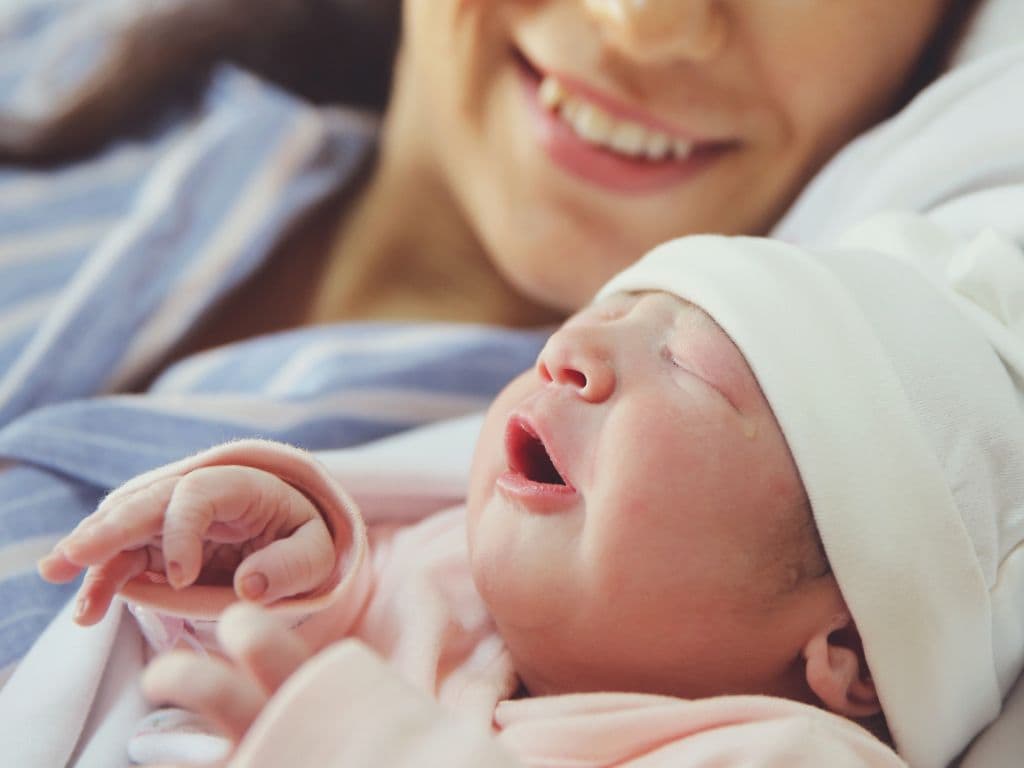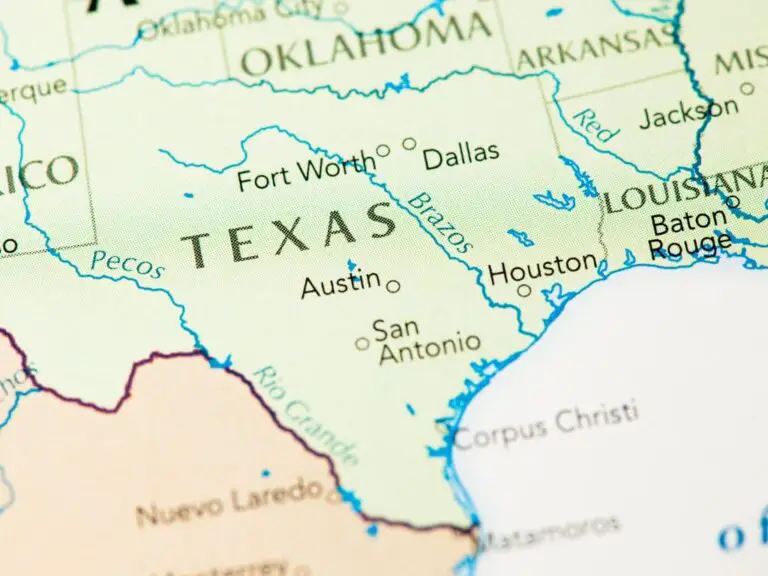Do Babies Always Have the Father’s Blood Type?
Babies do not always have the father’s blood type. A baby’s blood type and Rh factor can either be the same as one of the parents, a combination of both, or even a blood type that neither parent has due to the complex genetics involved. The patterns of blood type inheritance are influenced by multiple genes, and therefore not strictly determined by the father’s blood type alone.

What Is Blood Type and Why Is It Important?
A blood type is a classification of blood based on the presence or absence of inherited antigenic substances on the surface of red blood cells (RBCs). These antigens may be proteins, carbohydrates, glycoproteins, or glycolipids, depending on the blood group system. The four major blood groups (A, B, AB, and O) are determined by the presence or absence of two antigens, A and B. Another crucial factor is the Rh protein, which can be either present (+) or absent (–), resulting in the eight most common blood types (A+, A-, B+, B-, O+, O-, AB+, AB-).
Blood type plays a vital role in blood transfusions and is crucial for compatibility. An incompatible blood transfusion can trigger an immune response leading to transfusion reactions, which can be life-threatening. For example, Rh-negative blood is given to Rh-negative patients, while Rh-positive or Rh-negative blood may be given to Rh-positive patients.
Type O negative blood is considered universally acceptable for transfusions, and AB is the universal plasma donor. However, there are more than 600 other known antigens, the presence or absence of which creates “rare blood types.” These are specific to ethnic or racial groups, and their availability is critical for treating specific conditions, such as sickle cell disease in the African-American population.
Blood type is inherited from parents, similar to other genetic traits like eye color. Knowledge of one’s blood type is crucial for medical emergencies, surgeries, pregnancy, and specific treatments, and to meet the constant need for blood from diverse populations and rare blood types.
Do Babies Always Have the Father’s Blood Type?
No, babies do not always have the father’s blood type. A baby’s blood type and Rh factor can either be the same as one of the parents, a combination of both, or different from both.
The blood type is determined by the proteins present on the red blood cells and in body fluids, while the Rh factor is determined by a protein found on the covering of the red blood cells. The Rh factor can be positive, which indicates the presence of the Rh factor protein, or negative, which indicates the absence of the Rh factor protein.
The possible combinations of blood types with Rh factors include A+, B+, O+, AB+, A-, B-, O-, and AB-. These combinations are determined by the genetic inheritance from the parents. The Rh-positive gene is dominant; thus, even if paired with an Rh-negative gene, the positive gene takes over. Hence, if a person has the genes + + or + -, the Rh factor will be positive, and if a person has the genes – -, the Rh factor will be negative.
In the case of the baby, one gene is received from the father and one from the mother. Depending on the combination of genes inherited, the baby can be Rh positive or Rh negative, irrespective of the father’s Rh factor.
Therefore, the baby’s blood type and Rh factor may not necessarily match that of the father’s. It’s also worth noting that problems with the Rh factor can occur when the mother’s Rh factor is negative and the baby’s is positive. Incompatibility may also occur when the mother is blood type O and the baby is either A or B.
How Is a Baby’s Blood Type Determined?
A baby’s blood type is determined by the combination of genes inherited from both parents. This can either be the blood type and Rh factor of either parent or a combination of both. The blood type is determined by proteins on red blood cells and in body fluids, and the Rh factor is a protein found on the covering of the red blood cells.
The Rh factor can be either positive or negative. If the Rh factor protein is present on the cells, the baby is Rh-positive. If there is no Rh factor protein, the baby is Rh-negative. The Rh-positive gene is dominant and will prevail even when paired with an Rh-negative gene. Thus, if a baby inherits the genes + + or + -, the Rh factor will be positive. Only if a baby inherits the genes – – from both parents will the Rh factor be negative.
For instance, if both parents have Rh factor genes + +, the baby will be + + Rh positive. If the father’s Rh factor genes are + +, and the mother’s are – -, the baby will be + – Rh positive. If the father’s genes are + – Rh positive, and the mother’s are + – Rh positive, the baby could be either + + Rh positive, + – Rh positive, or – – Rh negative. If the father’s genes are – -, and the mother’s are + -, the baby can be either + – Rh positive or – – Rh negative. Finally, if both parents have – – genes, the baby will be – – Rh negative.
It’s notable that problems can occur with the Rh factor when the mother’s Rh factor is negative and the baby’s is positive. An incompatibility may also occur when the mother is blood type O and the baby is either A or B. This is due to specific antigens present in the blood types, which can cause an immune response.
What Are the Chances of a Baby Having the Father’s Blood Type?
A baby’s blood type and Rh factor are determined by the genetic contributions of both parents. Each person has two blood type genes – one from each parent that combine to dictate their blood type. Blood types are categorized into A, B, AB and O, and further divided into positive and negative Rh factors. A and B are dominant, O is recessive, and AB is co-dominant.
If both parents have type O blood, the baby will also have type O. If one parent has type A and the other has type O, the baby has a 50% chance of having type A and a 50% chance of having type O. If one parent has type A and the other has type B, the baby could end up with A, B, AB or O. The Rh factor follows a similar pattern.
Rh positive is dominant and Rh negative is recessive. So, if one parent has Rh+ and the other has Rh-, there’s a higher chance of the baby being Rh+. However, if both parents are Rh-, the baby will also be Rh-.
Therefore, the chances of a baby having the father’s blood type depend on the blood type and Rh factor of both parents. It’s not a guarantee that the baby will have the father’s blood type, as the mother’s blood type genes can be dominant or co-dominant.
Can Two Parents With Different Blood Types Produce a Child With Either Parent’s Blood Type?
Yes, two parents with different blood types can produce a child with either parent’s blood type. The blood type of a person is determined by the presence of certain proteins (antigens) on the surface of their red blood cells, and these are inherited from both parents. The four main blood types are A, B, AB, and O, which result from a combination of the A and B antigens.
For instance, a child could inherit an A antigen from one parent and a B antigen from the other, resulting in AB blood type. Similarly, a child could inherit an A antigen from one parent and no antigen from the other, resulting in an A blood type. If a child inherits neither A nor B antigens from their parents, they would have an O blood type.
The Rh factor, a separate antigen, can be either positive or negative. This is also inherited from both parents, but the positive Rh factor is dominant. Hence, if a child inherits a positive Rh factor from at least one parent, they will be Rh positive. If they inherit a negative Rh factor from both parents, they will be Rh negative.
If the Father Has Type O Blood, What Is the Likelihood of the Child Having Type O Blood?
Blood type is determined by the ABO gene that a child inherits from their parents. There are three types of ABO genes: A, B, and O. Each person inherits one ABO gene from their mother and one from their father.
If a father has type O blood, he has two O genes because type O is recessive and only appears when no A or B gene is present. Therefore, he can only pass an O gene to his child.
The likelihood of the child having type O blood mainly depends on the blood type of the mother:
- If the mother has type A blood (with AA or AO genotype), the child has a 50% chance of having type A blood (if the mother passes on the A gene) and a 50% chance of having type O blood (if the mother passes on the O gene).
- If the mother has type B blood (with BB or BO genotype), the child has a 50% chance of having type B blood (if the mother passes on the B gene) and a 50% chance of having type O blood (if the mother passes on the O gene).
- If the mother has type AB blood, the child can’t have type O blood because the mother can only pass on A or B genes.
- If the mother has type O blood, the child will definitely have type O blood because both parents can only contribute O genes.
Other factors such as the Rh factor can complicate this basic inheritance pattern. For instance, if the mother and the baby have different Rh factors, it can lead to health problems for the baby.
If a Baby Does Not Have the Father’s Blood Type, What Could Be Some Possible Explanations?
If a baby does not have the father’s blood type, there could be several possible explanations. The blood type and Rh factor of a baby can be influenced by the genetic inheritance from both parents, not just the father. A baby’s blood type (A, B, AB, or O) and Rh factor (positive or negative) are determined by the combination of the parents’ genes.
Blood types are determined by a set of alleles – A, B, and O – inherited from the parents. A and B are dominant, while O is recessive. If the father is blood type A, for example, and the mother is blood type B, the baby could be either A, B, or AB, depending on the allele combination. If the mother is type O, the baby could either be A or O. In this case, if the baby’s blood type is O, it means the father’s dominant A gene did not take over.
The Rh factor follows a similar pattern of genetic inheritance. The Rh-positive gene is dominant, and the Rh-negative gene is recessive. If the father is Rh positive (+ + or + -) and the mother is Rh negative (- -), the baby could be either Rh positive (+ -) or Rh negative (- -) depending on the gene inherited from the father. If the baby is Rh negative, it means the father’s dominant Rh-positive gene did not take over.
Furthermore, an Rh incompatibility may occur when the mother is Rh-negative and the baby is Rh-positive. This can happen if the father is Rh-positive and passes this dominant gene to the baby.
Therefore, the blood type or Rh factor of a baby not matching the father’s can simply be a result of the combinations of genes received from both parents. It is also essential to note that genetic mutations, although rare, can also occur, leading to discrepancies in expected blood types.
In some rare cases, a biological relationship may not exist between the presumed father and the baby. This situation, known as non-paternity, can be confirmed through genetic testing. However, this is generally a last resort, as most blood type discrepancies are due to the complex nature of genetic inheritance.
How Is a Baby’s Blood Type Tested and Identified?
A baby’s blood type is tested and identified through a process known as an ABO blood type test. This test is a standard procedure to categorize blood into one of four types: A, B, AB, or O. The categorization is based on the presence of certain markers, called antigens, on the surface of the baby’s red blood cells.
To conduct the test, a healthcare professional takes a sample of the baby’s blood. There is no special preparation required before the test. The ABO test is commonly performed to check whether jaundice in a newborn might be serious, especially if the baby’s blood type is different from the mother’s. It is also done before the child undergoes surgery or receives a blood transfusion.
After the test, follow-up care is essential to ensure the child’s safety. The results are usually provided by the doctor, who will also advise on any necessary interventions or precautions based on the blood type.
Is It Necessary for Both Parents to Know Their Own Blood Types Before Conceiving a Child?
While it is not absolutely necessary for both parents to know their blood types before conceiving a child, it can be beneficial. Knowing the blood types of both parents can help predict the potential blood type and Rh factor of the unborn child, which can be important in certain medical situations during pregnancy.
The Rh factor is a protein found on red blood cells. If the mother is Rh negative and the father is Rh positive, there is a chance the baby could be Rh positive. In such cases, the mother’s immune system may develop antibodies against Rh positive blood cells, which can cross the placenta and attack the baby’s red blood cells leading to Rh disease. This can cause severe anemia in the baby and can be life-threatening in severe cases.
However, Rh disease is preventable with the use of Anti-D injections during pregnancy and after birth. The injections stop the mother’s immune system from producing the antibodies that attack Rh positive blood. Therefore, knowing the blood types of both parents can help prepare for and prevent possible complications.
Knowing the blood type of parents can also be useful in case the mother needs a blood transfusion during pregnancy or childbirth. Certain blood types are compatible with others for transfusion, so knowing the mother’s and father’s blood types can help ensure the right type of blood is readily available if needed.
What Is the Impact of Rhesus (Rh) Factor?
The Rhesus (Rh) factor is a protein found on the surface of red blood cells that plays a significant role, particularly during pregnancy. The presence or absence of this protein determines whether a person is Rh positive or Rh negative, a qualification that is part of one’s blood type, such as O positive or A negative.
The Rh factor’s impact becomes particularly significant during pregnancy, specifically when an Rh negative mother is carrying an Rh positive fetus, a situation known as Rh incompatibility. If the blood of the Rh positive fetus enters the bloodstream of the Rh negative mother, her body may recognize the Rh positive blood as foreign and produce anti-Rh antibodies that can cross the placenta and attack the red blood cells of the fetus. This can lead to severe health issues for the fetus or newborn, including serious anemia, where red blood cells are destroyed faster than the body can replace them, resulting in insufficient oxygen for the fetus. In some cases, Rh incompatibility can also cause jaundice in a newborn.
Rh antibodies typically do not cause problems during a first pregnancy, as the body does not have sufficient time to develop many antibodies. However, without treatment, subsequent pregnancies with an Rh positive fetus can be at risk, as the woman’s body will produce more antibodies. The mother can also develop Rh antibodies after a miscarriage, ectopic pregnancy, or induced abortion, putting future pregnancies at risk if they are Rh positive.
The prevention of Rh incompatibility problems is possible through early detection of an Rh negative status in the mother, and if needed, administration of Rh immunoglobulin (RhIg), a medication that prevents the body from forming Rh antibodies. This treatment is most effective when given before the body has begun producing Rh antibodies. If antibodies have already formed, the fetus’s health will be monitored throughout the pregnancy and, depending on the severity of the anemia, may require early delivery or a blood transfusion.
What Causes Twin Babies to Have Different Blood Types?
Twin babies can have different blood types primarily when they are fraternal or dizygotic twins. Fraternal twins are formed when two separate eggs are fertilized by two separate sperm, creating two unique genetic profiles. Unlike identical or monozygotic twins who share the same genetic makeup and therefore the same blood type, fraternal twins are no more genetically alike than siblings from separate pregnancies.
Blood type is determined by the presence or absence of certain antigens on the surface of red blood cells. Two of these antigens, A and B, are dominant, and O is recessive. Therefore, a baby inherits one gene from each parent and the combination determines the blood type. For instance, a child may inherit an A gene from one parent and a B gene from the other, resulting in AB blood type. Alternatively, if a child inherits O genes from both parents, the blood type will be O.
In the case of fraternal twins, each egg is independently fertilized by a separate sperm, each sperm carrying a different combination of genes. Therefore, the blood type of each twin will depend on the combination of A, B, and O genes inherited from each parent’s egg and sperm. This is why fraternal twins can, and often do, have different blood types.
On the other hand, identical twins share the same genetic profile because they are formed from a single fertilized egg that splits into two embryos. This means that identical twins will always have the same blood type because they have the same genetic material.
What Is Bombay Blood Group and How Does It Affect Parent-Child Blood Type Similarities?
The Bombay blood group, also known as h/h blood group or Oh phenotype, is a rare blood type first discovered in Bombay (now Mumbai), India in 1952. This blood group is characterized by the absence of A, B, and H antigens on the red blood cells and the presence of anti-A, anti-B, and anti-H antibodies in the plasma. Essentially, this means that individuals with the Bombay blood group cannot receive blood from any of the ABO blood types (A, B, AB, or O), but only from another individual with the Bombay blood type.
The Bombay blood group is caused by a point mutation of the H gene, which results in the h gene that does not code for any protein. As a result, the protein fucosyltransferase, responsible for adding L-fucose to the precursor chain to form the H antigen, is not produced. This leads to the absence of H, A, and B antigens, even in the presence of A and B genes. The lack of these antigens mimics the O blood group, but the presence of anti-H antibodies results in incompatibility with all other blood types, including O, during transfusion as they carry the H antigen.
The incidence of the Bombay blood group is extremely low, with about 1 in 10,000 people in India and 1 in 106 in Europe having this blood type. This presents a significant challenge in situations requiring blood transfusion, as finding a compatible blood donor can be difficult.
The Bombay blood group can affect parent-child blood type similarities in the sense that for a child to have the Bombay blood group, both parents must carry the h gene mutation. However, it is worth noting that even if both parents carry the h gene, there is still only a 25% chance that a child will have the Bombay phenotype. This is because the Bombay blood group is an autosomal recessive condition, meaning two copies of the altered gene, one from each parent, are needed to exhibit the characteristic.
Does the Blood Type of the Parents Affect the Health of the Baby?
The blood type and Rh factor of the parents can potentially affect the health of the baby, particularly in the context of Rh factor incompatibilities. While the blood type (O, A, B, or AB) itself does not inherently pose a risk to the baby’s health, the Rh factor can. The Rh factor is a protein present on the covering of red blood cells; if it is present, a person is Rh positive, whereas if it is absent, they are Rh negative.
Rh factor incompatibilities can arise when the mother is Rh negative and the baby is Rh positive. This can occur if the father’s Rh factor is positive, and the baby inherits this trait. When the mother’s body is exposed to the baby’s Rh positive blood, her body may perceive it as a foreign substance and produce antibodies against it. This is usually not problematic during a first pregnancy, but in subsequent pregnancies, these antibodies can cross the placenta and attack the red blood cells of the baby, leading to a condition called hemolytic disease of the newborn.
Incompatibilities can also occur with blood type if the mother is type O and the baby is either A or B. This is less common and less severe than Rh incompatibility, but can still cause mild jaundice in the newborn.
Genetic counseling and careful prenatal care can identify and manage these potential issues. Rh negative mothers are often treated with a medication called Rh immune globulin, which can prevent the mother’s body from producing Rh antibodies, thereby preventing hemolytic disease of the newborn.
Is There a Link Between Blood Type and Personality Traits?
The theory of a link between blood type and personality traits originates from a Japanese concept known as “ketsueki-gata.” Introduced in 1929 by professor Tokeji Furukawa, this theory suggests that personality traits can be influenced by the different biological responses created by the surface differences of blood cells in each blood type. This concept was further expanded upon by independent researcher Masahiko Nomi in the 1970s, who suggested that blood type could also be linked to disease or physical predispositions.
However, this theory remains largely unproven and heavily criticized by the scientific community. There is currently no scientific evidence that supports a cause-and-effect relationship between a person’s blood type and personality traits. Many studies, including a recent one from 2021, have found no significant correlation between blood type and personality.
Despite these findings, some researchers suggest that there may be more to the story. A 2015 study found that certain blood types appeared to have a greater genetic probability of producing chemicals in the body that may influence impulsivity and sensation-seeking. This suggests that blood type may have a minor influence on personality. However, the study’s authors cautioned that this link should not be overstated, as blood type is not a direct cause of personality development.
Frequently Asked Questions
-
What does it mean when a 90 year old sleeps a lot?
What causes excessive sleep Side effects of medications. Depression and anxiety. Boredom can be caused by a lack of stimulation. Health problems that are deeper than this.
-
Do babies always have the father’s blood type?
Is it common for a child to have the same blood type or a different parent? Although a child may have the same blood type or one parent, this is not always true. Parents with AB or O blood types may have children who are blood type A, B, etc.
-
Do thin people live longer?
U.S. scientists discovered that people who were slim had a lower risk of death over 15 years — 12 percent in women, and 20% for men. Obese women and men posed the greatest risk, at 20 percent and 24% respectively.
-
What is normal blood pressure for 85 year old?
Men and women aged 65 and older should have blood pressures below 130/80 mm Hg.
-
What is your life expectancy if you are 65?
The average American man 65 years old can live an additional 18.2 years. On average, women 65 and older can live for 20.8 additional years. The average American life expectancy was 78.79 in 2019.
-
What are the chances of dying everyday?
In the United States, for example, a 30-year-old man is likely to die tomorrow at a rate of 1 in 260,000, while a 30-year-old woman will have a chance of dying tomorrow at a rate of 1 in 583,000. One in four6,000 men over 55 years old will die on any given day, and one in seven9,000 for women 55-years old.
-
Why do first born daughters look like their fathers?
An old theory states that first born babies are genetically more likely to be like their fathers. This was because the father believed the baby was his, and would care for it. Another theory is that he did not eat the baby.
-
How long will a 95 year old live?
The average age at which 95-year olds lived was 3.34 years. The average life expectancy for 100-year olds was 2.73 years. ThinkAdvisor has 7 secrets to help you understand the science of aging.
-
Do siblings have the same DNA?
Dennis states that siblings share only about 50% of their DNA due to recombination. Although biological siblings may share the same family tree and genetic codes, they might have different genes in one or more of the tested areas. This is true for fraternal and paternal siblings.
-
Why do some smokers live longer?
Some people smoke up to a pack per day starting at age 18 and continuing on until they reach the nineties. This is because very few people are more susceptible to the carcinogenic and arterial effects of smoking than we.
-
How long will an 80 year old live?
In the United States, the average life expectancy for white 80-year old women is 9.1 years and white 80-year-old men is 7.0.
-
Do tall people live longer?
Average life expectancy for men who are 175.3cm or shorter was 4.95 years, compared to those over 175.3cm. Men who were 170.2 cm taller or smaller lived 7.46 more years than their counterparts of 182.9 cm.
-
Is 74 old for a woman?
The chronological age at which an individual is considered to be 65 years old or more has traditionally been considered the definition of the “older” category. People aged 65-74 are often referred to early elders, and those older than 75 are called late old.
-
What age is considered long life?
Although the average life expectancy for Americans is 80 years, many people can live well into their 80s and 90s. Centenarians, people over 100 years of age or older are increasing in number. Some 72,000 Americans became centenarians in 2015.
-
How long do pretty people live?
Average life expectancy for men rated attractive was 76 years. The average age of those at the bottom rung was 69. Average age for the most beautiful women was 76. This is three years more than what it took to be rated all-around hot.






